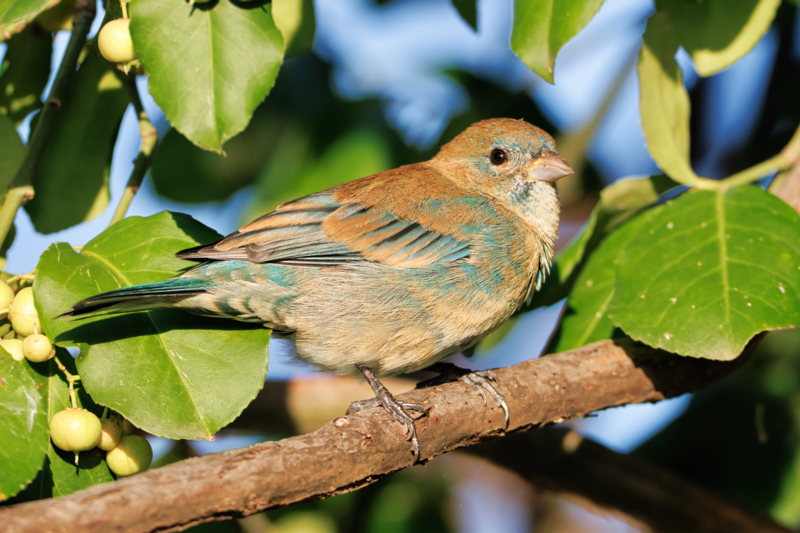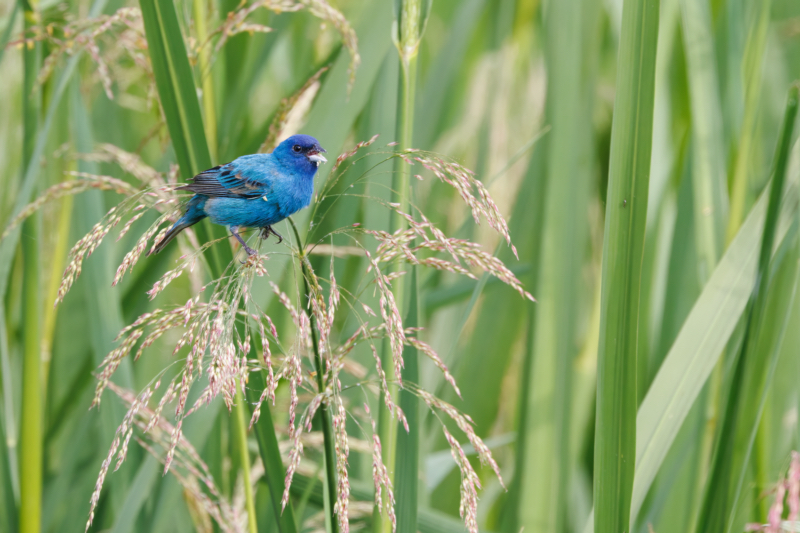What a big difference in the color of a male Indigo Bunting in the fall and one in the summer! The first image is of a male Indigo Bunting I photographed on September 26 at the Sequoyah National Wildlife Refuge in Oklahoma. He is mostly brown with just tinges of blue in his plumage. The second image shows a vibrant, blue male Indigo Bunting that I photographed on May 29, also at Sequoyah.


The breeding plumage of the male Indigo Bunting in spring and summer is a beautiful, brilliant blue. But in the fall and winter months, his colors become much duller as he molts into a brown non-breeding plumage. This seasonal shift serves an important purpose – the bright blue breeding plumage helps attract a mate in spring and summer, while the duller non-breeding browns and grays provide better camouflage and protection during the winter months.
As a wildlife photographer, I’m fascinated by the cyclical, seasonal changes in bird plumage. It’s amazing to me how the Indigo Bunting can transform from a striking sapphire blue to a subtle, sparrow-like brown within a matter of months. His breeding plumage is truly one of the most vibrant shades of blue found in North American songbirds. The rich, saturated hue almost doesn’t look real at first glance – it’s a magical sight!
Yet despite the dramatic change in his appearance, an experienced birder can still recognize the Indigo Bunting in his various guises. The key field marks – conical bill, notched tail, wing bars – remain consistent through the seasons. It takes a keen observer to look beyond the plumage and connect the dots between the electric blue breeding male and his plain brown counterpart.
As a wildlife photographer, I have great respect for birders who can keep track of the breeding and non-breeding plumage of different bird species throughout the year. The colors and patterns can vary so much from season to season. It’s a testament to their passion, dedication and sharp observation skills! I’m still working on consistently identifying birds in their myriad plumage.
Steve Creek, Wildlife Photographer
Image Information (First Photo):
- Camera: Canon EOS R7
- Lens: Canon EF 500mm f/4L IS USM
- Location: Sequoyah National Wildlife Refuge, Oklahoma
- Date and Time Taken: September 26, 2023 (08:00 A.M.)
- Program Mode: Manual
- Aperture: f/5.6
- Shutter Speed: 1/1250 sec
- ISO: 640 (Auto)
- Exposure Comp: 0
- Focal Length: 500mm
